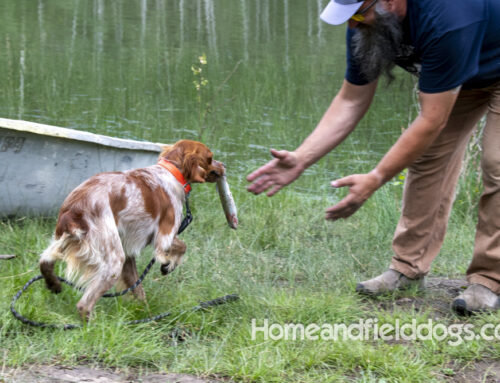Cheatgrass poses some hidden dangers, but the biggest problem is that is where the chukar winter, so understanding the dangers can help you get them anyway, but provide you the resources to keep your partner healthy.
As a proud owner of a French Brittany, I understand the joy of watching our furry companions bounding through fields and meadows. However, lurking within these idyllic scenes is a hidden danger that every dog owner should be aware of: cheatgrass.
Cheatgrass, or Bromus tectorum, is an invasive species that can potentially pose serious health problems to our beloved pets1. While it may appear harmless, this plant’s seeds are designed to burrow into the ground, and unfortunately, they can also burrow into our dogs’ paws, ears, nostrils, and skin23.
How Cheatgrass Affects Your Dog’s Health
Cheatgrass seeds can lead to serious infections and other complications if they become embedded in your dog’s skin or other tissues4. These seeds don’t contain any toxins, but their ability to get stuck in an animal’s tissues can cause strong reactions5. They’ve even been found in dogs’ lungs6, indicating just how insidious this grass can be.
The symptoms of cheatgrass exposure can vary depending on where the seed has lodged itself. Common signs to look out for include fever, lethargy, extreme sneezing, head-shaking, coughing, excessive licking, pain, swelling, redness, and discharge7. If you notice any of these symptoms, it’s crucial to seek veterinary assistance immediately as these seeds can migrate deeper into tissues over time, making them harder to remove and increasing the risk of severe complications.
Preventing Cheatgrass Exposure
Prevention is always better than cure, and there are several steps you can take to protect your French Brittany from cheatgrass. Regularly check your dog’s fur, especially after walks in areas where cheatgrass grows. Pay particular attention to their paws, ears, and underbelly. Brushing your dog’s coat after outdoor activities can also help to remove any stray seeds before they become a problem8.
Avoid walking your dog in areas known to have cheatgrass, especially during its seeding season in late spring and early summer. If this is unavoidable, consider protective gear for your dog such as boots and fitted bodysuits designed to prevent seeds from latching onto their skin and fur.
Recognizing the Signs
Recognizing the signs of cheatgrass exposure early on can make all the difference for your pet’s health. Don’t overlook any unusual behavior in your dog following outdoor activities. If your French Brittany is persistently licking a specific area, shaking their head, or showing signs of discomfort, it could be an indication of cheatgrass exposure7.
In conclusion, while cheatgrass poses a significant risk, being informed and vigilant can help you protect your French Brittany from this hidden danger. Always remember that if you suspect your dog has been exposed to cheatgrass, seek veterinary care immediately. Your furry friend will thank you!
Stay safe and enjoy your outdoor adventures!






Leave A Comment